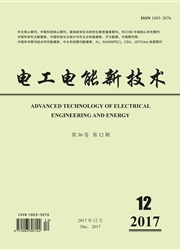

 中文摘要:
中文摘要:
真空沿面闪络的发生与发展的过程是电气与电子领域众多学者长期以来所关注的问题,这一复杂的放电现象至今还不能完全从机理上给予说明。本文采用电气、光学联合检测的方法,利用增强型电荷耦合器件(ICCD)对真空冲击电压下氧化铝陶瓷沿面闪络现象的动态发展过程进行了研究,考察了在试样表面溅射金属薄膜电极对闪络发光现象的影响。从闪络的电压、电流和发光波形看出,闪络发生时的电流和发光峰值出现时间一致,并滞后于电压截断点。从ICCD图像可以发现,在试样表面发生完全闪络之前其表面已经出现预闪络发光通道,而沿面闪络发光的最强阶段出现在闪络发生之后的几十纳秒,此时电流出现最大值,能够发现在电极的边缘位置发光最为强烈;溅射电极之后试样的沿面闪络电压有所降低,闪络发生时的发光强度提高,在闪络发生时电极之间的材料内部可能出现体内的复合过程。
 英文摘要:
英文摘要:
Flashover phenomenon in vacuum has been an interesting issue in the fields of both electrical and electronic systems for more than half a century. However,this phenomenon is so complicated that up to now the related mechanisms have still not been understood clearly. In this paper the ICCD system was used to grasp the dynamic flashover images across the surface of alumina ceramic in vacuum under pulsed voltage excitation. The oscilloscope waveforms show that the peak value of current and lighting appear simultaneity with a little delay to the voltage truncation time.The results indicated that the flashover develops rapidly in less than 50ns and the electrodes edge shows the highest light intensity. The ICCD images show that,before flashover phenomenon appears the lighting channel already occurs on the sample surface,the strongest lighting appears in about tens of nanosecond after flashover phenomenon occurs. While the current reaches its largest value,the strongest lighting intensity appears at the electrode edge. After metal film electrodes sputtered on the sample the flashover voltage decreases,the lighting intensity increases,and there is recombination process between electrodes in the material.
 同期刊论文项目
同期刊论文项目
 同项目期刊论文
同项目期刊论文
 期刊信息
期刊信息
